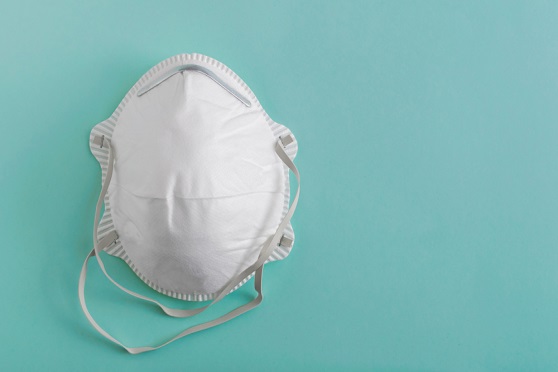IIT Guwahati develops coating to modify ordinary cloth masks for better COVID protection


Researchers at the Indian Institute of Technology (IIT) Guwahati have designed a Nanometer Thick Superhydrophobic Coating material to modify ordinary cloth or silk masks for greater comfort and better protection against aerosol-driven infections such as COVID-19.
N95 masks or double masking protects people to a great extent from the coronavirus, according to the World Health Organisation (WHO). But N95 masks are expensive and wearing them for a long period of time can lead to asphyxia. Cloth and silk masks, which are less expensive and more commonly available, are hence used by most people.
The coating material that IIT Guwahati researchers have come up is aimed at ensuring a safer, cost-effective and comfortable alternative to N-95 masks. The coating will modify the easily-available cloth mask into a hydrophobic mask to repel virus-laden droplets and avoid breathing difficulties even when worn for a longer period of time. Another benefit is that these masks are versatile and can be used with other additives such as antibacterial nanomaterial to provide additional protection against viruses.
The research was led by Arun Chattopadhyay of the department of Chemistry and Centre for Nanotechnology, IIT Guwahati, and Partho S.G. Pattader, department of Chemical Engineering, School of Health Science and Technology, and Centre for Nanotechnology, IIT Guwahati.
“A cloth mask is largely porous to aerosol and cannot effectively prevent COVID-19 infection. An improved version could prevent the entry or exit of aerosol. We have worked on that based on the principle of repulsion of aerosol by the modified cloth while allowing the air to flow through the mask. A simple coating of the hydrophobic molecule on the silk cloth worked well here,” Chattopadhyay said.
An instrument called gas chromatography was used to examine the breathability of the mask by measuring the oxygen permeation. The penetration of oxygen reduces by only 22% for the modified eri silk mask compared to the natural eri silk mask, whereas for N95 the reduction with respect to the natural eri silk came to around 59%. The modified silk mask is way more breathable than the N95 mask but with almost similar protection against aerosol-driven infections.
Prerona Gogoi, a student of Chemical Engineering at IIT Guwahati, and the first author of the paper said eri silk comes from the caterpillar Samia ricini native to northeast India and some parts of China and Japan.
“This is a one-step quick and inexpensive fabrication process that would help in the mass production and distribution of these masks to a large section of the population,” Gogoi said.
The sustainable, durable, and robust eri silk is softer than many other silks or cotton and has the unique property of staying cool in summer and warm in winter. When any droplet hits the modified eri silk mask, it bounces back into the air rather than being passed through the fabric or getting soaked by the fabric itself. Another advantage is that modified eri silk masks can be reused again after subsequent washing with household detergent and drying.
Partho S. G. Pattader, department of Chemical Engineering, School of Health Science and Technology, and Centre for Nanotechnology, IIT Guwahati, explained how the mask functions. “To attain hydrophobicity, eri silk fabric was coated with a biocompatible nanometer-thick coating of a chemical called octadecyl trichlorosilane (OTS). OTS, being a fluorine-free chemical after bonding with the fabric, becomes non-hazardous to health and the environment. And the good part is the cloth/silk masks still remain comfortably breathable after the nan-coating.”